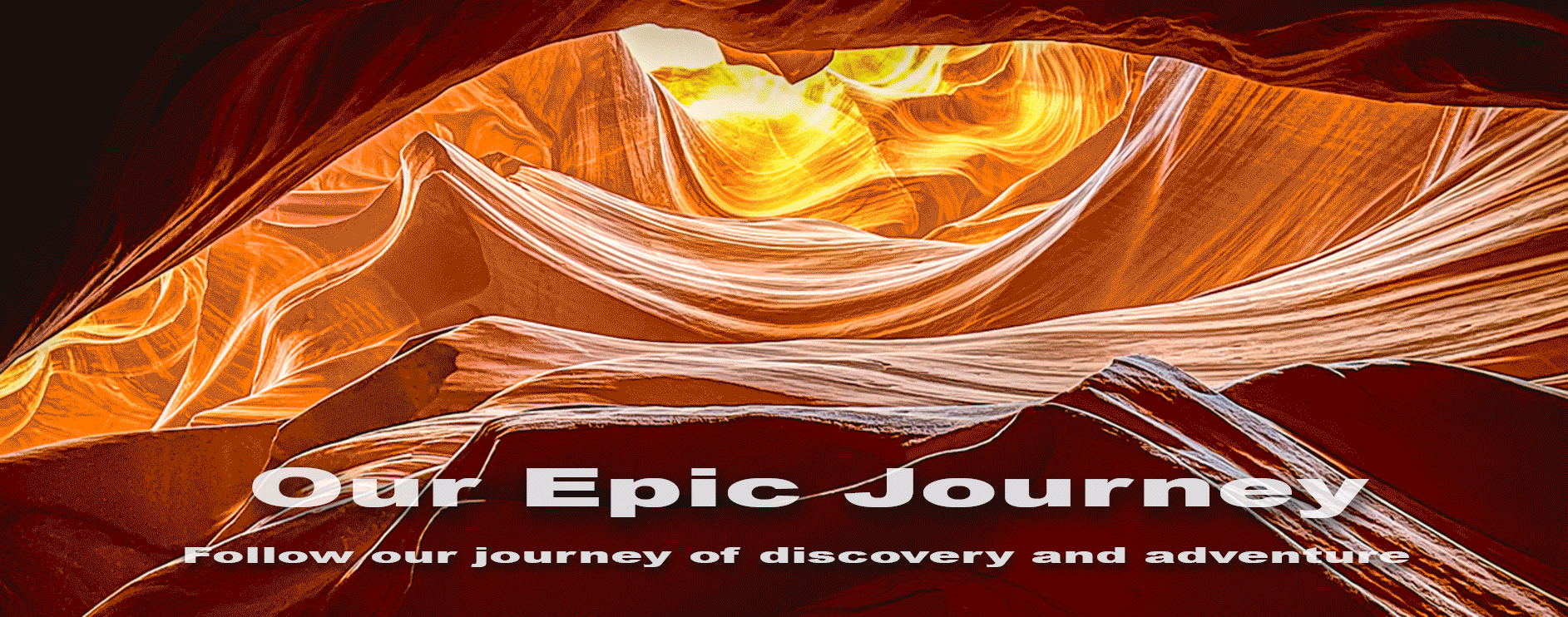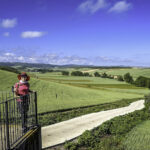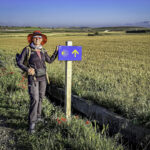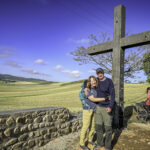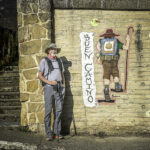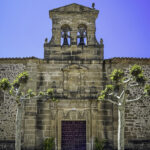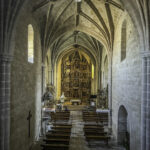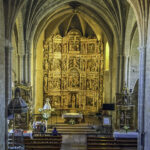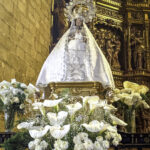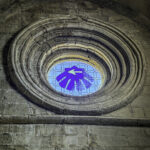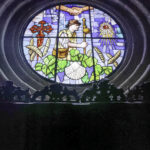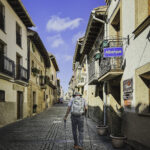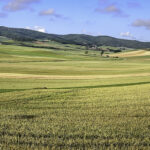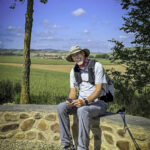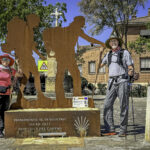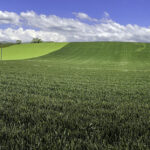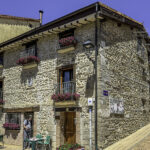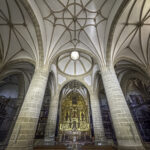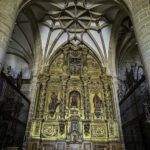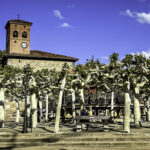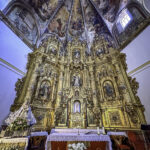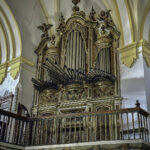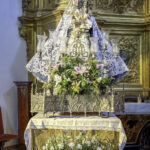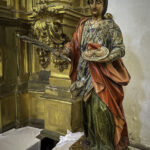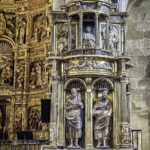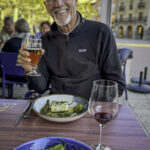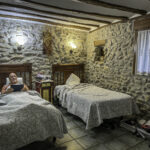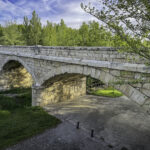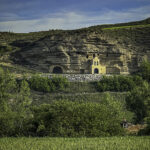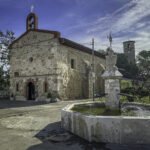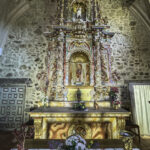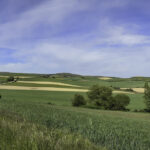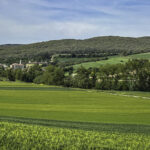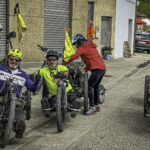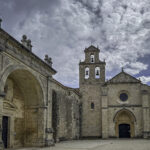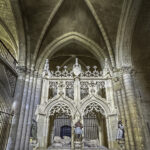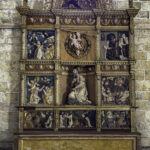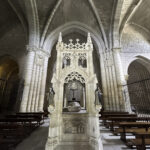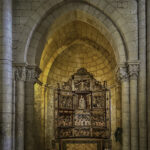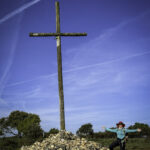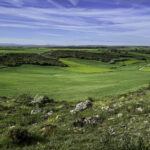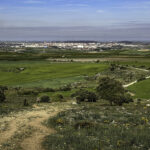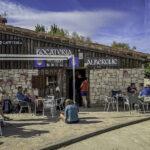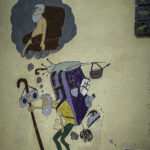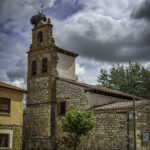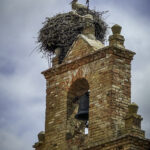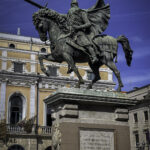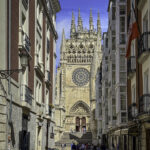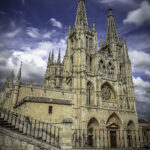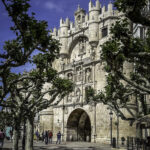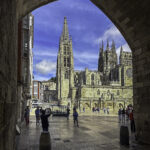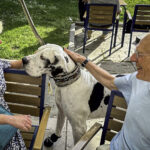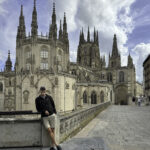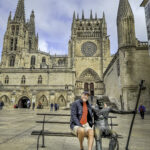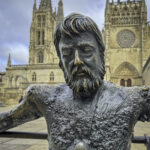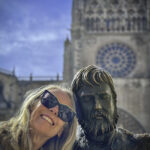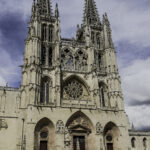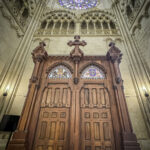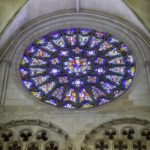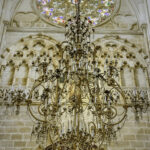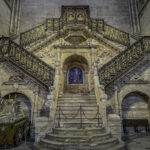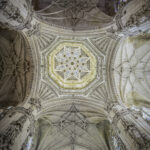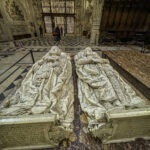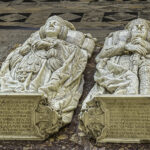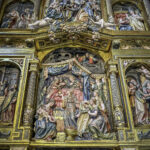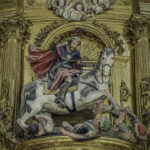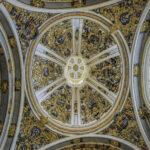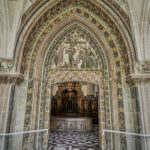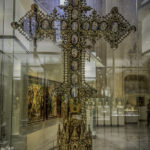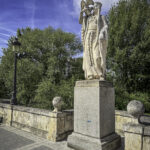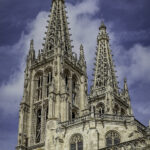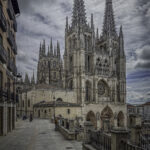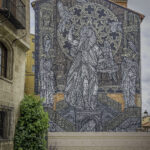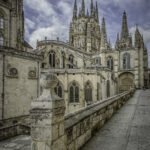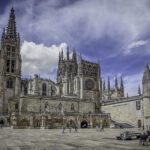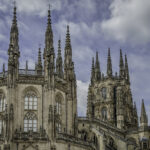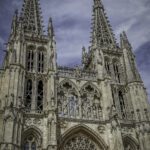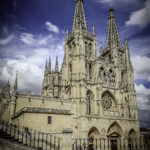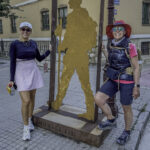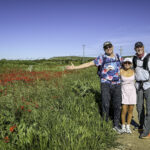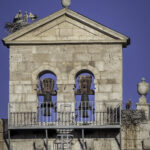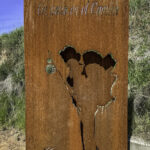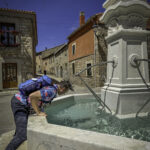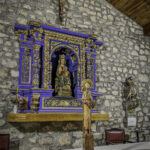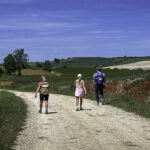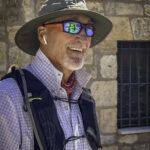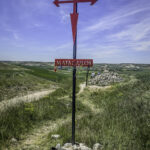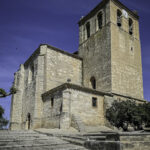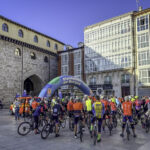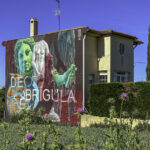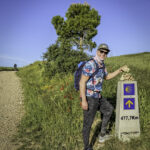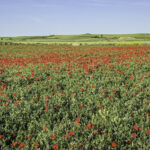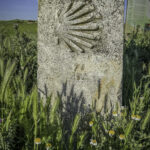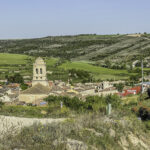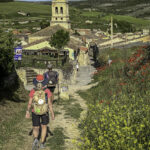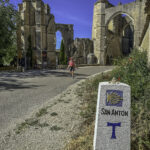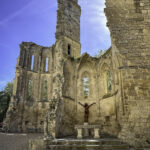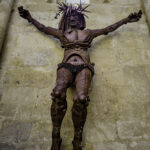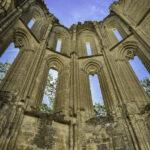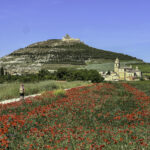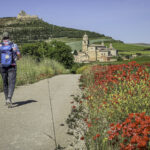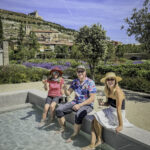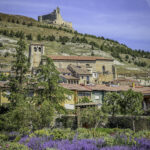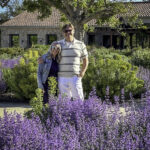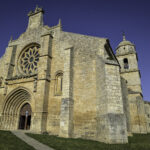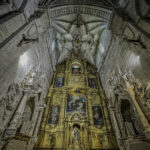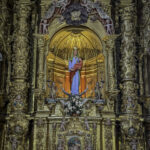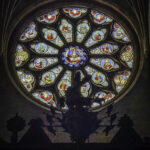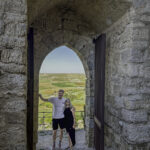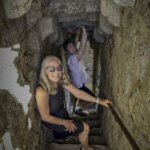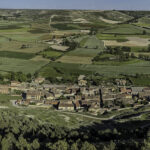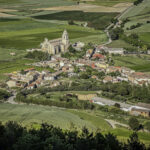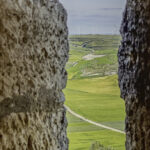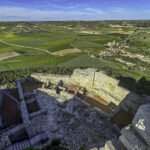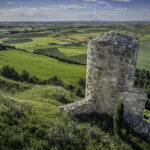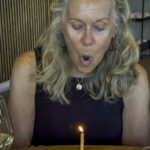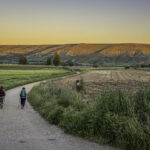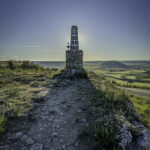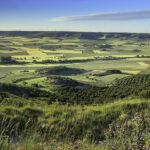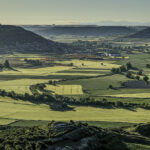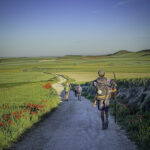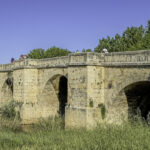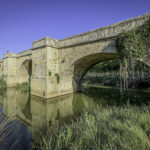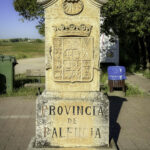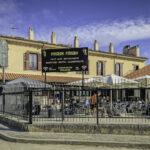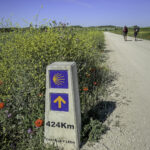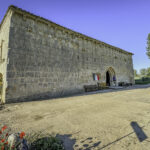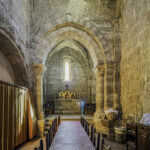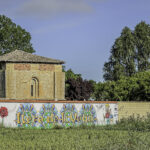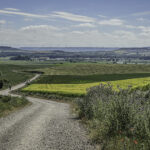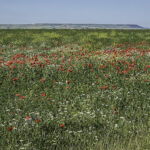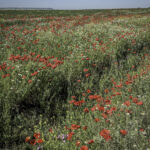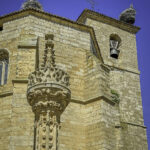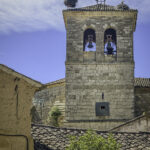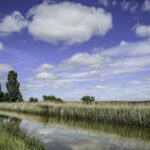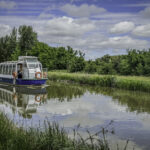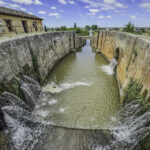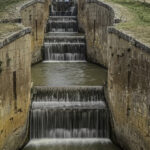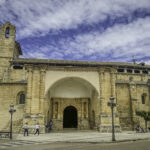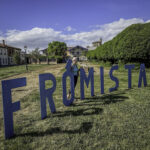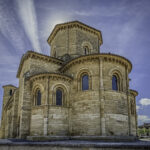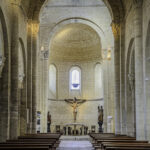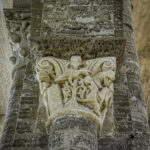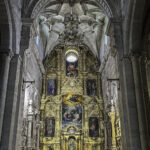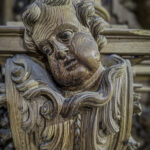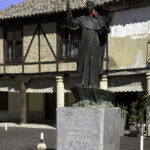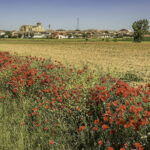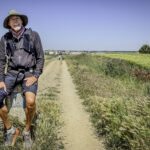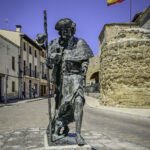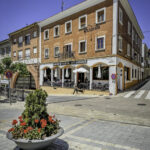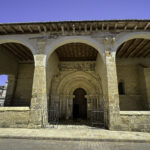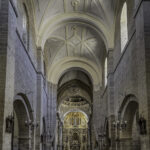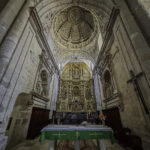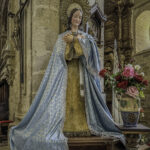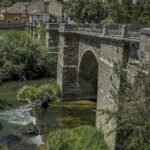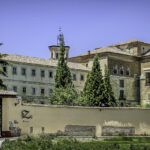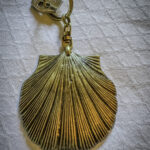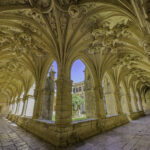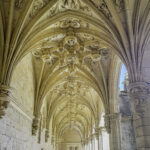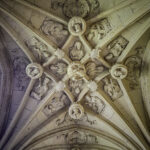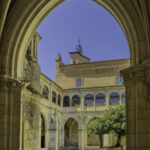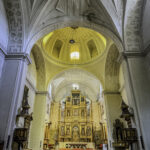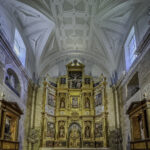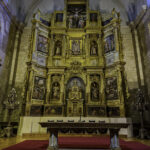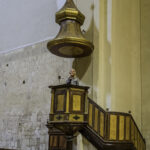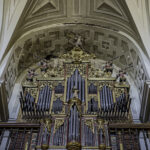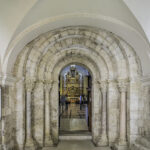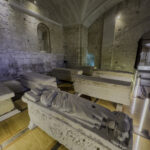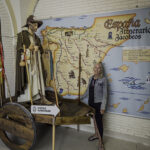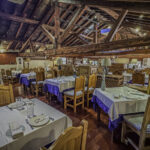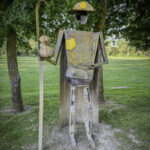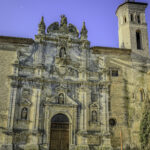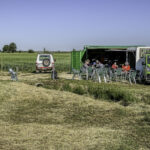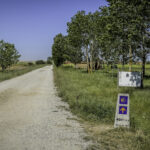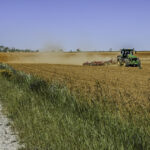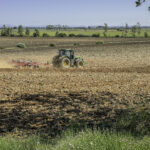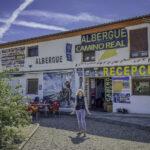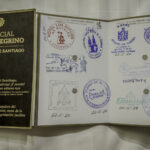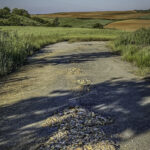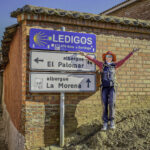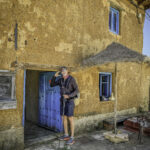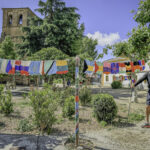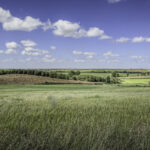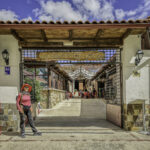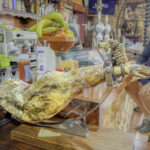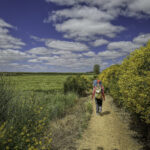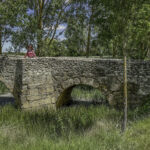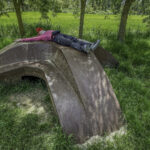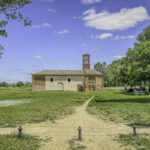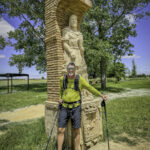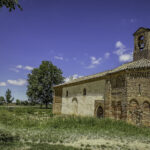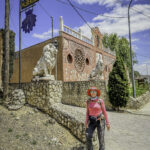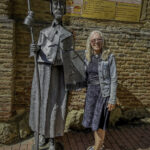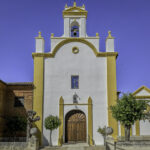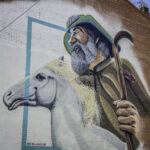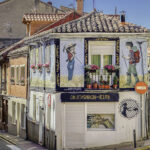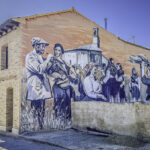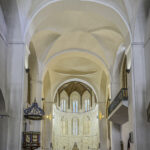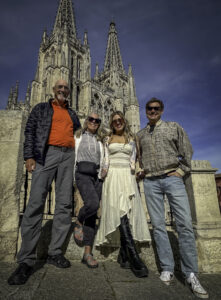 Castile’s history is deeply intertwined with the formation of modern Spain. The region played a pivotal role during the Reconquista, the centuries-long struggle to reclaim the Iberian Peninsula from Moorish rule. The Kingdom of Castile emerged as a powerful Christian stronghold, eventually uniting with the Kingdom of Aragon to form the cornerstone of a unified Spain in the late 15th century.
Castile’s history is deeply intertwined with the formation of modern Spain. The region played a pivotal role during the Reconquista, the centuries-long struggle to reclaim the Iberian Peninsula from Moorish rule. The Kingdom of Castile emerged as a powerful Christian stronghold, eventually uniting with the Kingdom of Aragon to form the cornerstone of a unified Spain in the late 15th century.
Castile is renowned for its stunning architecture, a testament to its rich history. The city of Burgos, with its awe-inspiring Gothic cathedral, and Segovia, home to a perfectly preserved Roman aqueduct, are prime examples. The medieval city of Toledo, once the capital of Spain, offers a mesmerizing blend of Christian, Muslim, and Jewish influences, evident in its synagogues, mosques, and churches.
As the birthplace of Castilian Spanish, the region holds a special place in the linguistic and literary heritage of Spain. The city of Alcalá de Henares, the birthplace of Miguel de Cervantes, author of the iconic “Don Quixote,” celebrates its literary legacy with numerous cultural events and landmarks dedicated to the great writer.
Traveling through Castile is like stepping back in time. From its medieval fortresses and grand cathedrals to its vibrant cultural traditions and mouthwatering cuisine, the region offers a deep and immersive experience of Spain’s rich heritage.
Day 11 Santo Domingo De La Calzada to Belorado
Day 12 Belorado to San Juan De Ortega
Leaving Belorado, the Camino climbed gradually into the Montes de Oca, a remote and forested area once notorious for bandits in medieval times. The terrain shifted from open plains to pine and oak forests, offering a tranquil and shaded path.
We passed through the village of Villafranca Montes de Oca, historically a key stop for pilgrims, with its 18th-century church and nearby ruins of a medieval hospital. From here, the ascent became steeper, and the trail wound through dense woodland, a contrast to the open farmland of previous days.
Reaching San Juan de Ortega, the tiny hamlet felt like a step back in time. The highlight was the 12th-century monastery and church built by the saint for whom the village is named, a key figure in improving the Camino’s infrastructure. The Romanesque church, with its serene interior, provided a quiet space for reflection after the day’s challenging walk. Click on thumbnail to view images
Day 13 San Juan De Ortega to Burgos
Departing San Juan de Ortega, the Camino descended through wooded trails and small villages like Agés and Atapuerca, the latter known for its UNESCO World Heritage archaeological site with evidence of Europe’s earliest human settlements.
After Atapuerca, the terrain became more open, transitioning to farmland and urban outskirts. The approach to Burgos involved a mix of rural paths and industrial areas, with the city’s spires visible in the distance.
Entering Burgos, we were greeted by its historic center and the iconic Gothic Cathedral of Santa María, a UNESCO site renowned for its intricate facades and expansive interior. Burgos, a significant stop on the Camino, offered a blend of history, culture, and modern amenities, marking the perfect end to this leg of the journey. Click on thumbnail to view images
Day 14 Burgos Rest Day
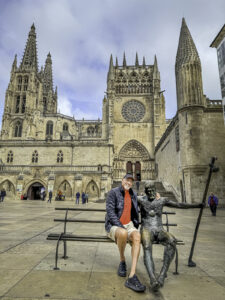 The Burgos Cathedral, officially known as the Cathedral of Saint Mary of Burgos, stands as a masterpiece of Spanish Gothic architecture in the heart of Castile and León. The construction of the cathedral began in 1221 under the reign of King Ferdinand III and the episcopacy of Bishop Mauricio. It was inspired by the great cathedrals of France, particularly the cathedrals of Paris and Reims, reflecting the influence of the French Gothic style.
The Burgos Cathedral, officially known as the Cathedral of Saint Mary of Burgos, stands as a masterpiece of Spanish Gothic architecture in the heart of Castile and León. The construction of the cathedral began in 1221 under the reign of King Ferdinand III and the episcopacy of Bishop Mauricio. It was inspired by the great cathedrals of France, particularly the cathedrals of Paris and Reims, reflecting the influence of the French Gothic style.
The initial phase of construction continued until 1260, resulting in the completion of the main structure. However, the cathedral has undergone numerous expansions and renovations over the centuries. In the 15th century, the magnificent spires that crown the cathedral today were added, designed by the German master architect Juan de Colonia. These spires are intricately detailed and have become iconic features of the Burgos skyline.
The cathedral’s interior is equally impressive, with an array of chapels, altarpieces, and tombs. One of the most notable chapels is the Chapel of the Constables, also known as the Chapel of the Purification, constructed between 1482 and 1496, a prime example of the late Gothic style, designed by Simón de Colonia, is one of the jewels of Burgos Cathedral. The Constable of Castile, Pedro Fernandez de Verlasco, and his wife, Mencia de Mendoza, were buried here. Philip of Burgundy in 1534 carved their tombs from Carrara marble. The cathedral also houses the tomb of the famous Spanish hero El Cid (Rodrigo Díaz de Vivar) and his wife, Doña Jimena.
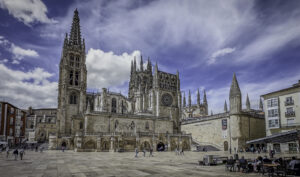 Over the centuries, the Burgos Cathedral has been a center of religious and cultural significance. It was declared a UNESCO World Heritage Site in 1984, recognizing its historical, artistic, and architectural value. Today, it remains a vibrant place of worship and a major tourist attraction, drawing visitors from around the world to marvel at its grandeur and historical importance.
Over the centuries, the Burgos Cathedral has been a center of religious and cultural significance. It was declared a UNESCO World Heritage Site in 1984, recognizing its historical, artistic, and architectural value. Today, it remains a vibrant place of worship and a major tourist attraction, drawing visitors from around the world to marvel at its grandeur and historical importance.
We spent the day at the Cathedral, with a 2 hour audio tour marveling at the 20 different chapels within the Cathedral and the craftsmanship it took to build it. The highlight of our rest day was the arrival in Burgos of our son Eric and his fiancée Laura who were going to spend three days with us. We had a wonderful day exploring Burgos and the amazing cathedral. We finished the day off with a wonderful meal and drinks with Eric and Laura and were joined by our new friends Maggie and Gordon White. Click on thumbnail to view images
Day 15 Burgos to Hornillos
Departing the historic city of Burgos, renowned for its UNESCO-listed Gothic cathedral and rich medieval heritage, we stepped into the vast expanses of the Meseta. This high plateau, often called the “breadbasket of Spain,” is characterized by its endless wheat fields, gently rolling terrain, and expansive skies. Joining us for this leg were our son Eric and his fiancée Laura, adding a joyful and familial element to our journey.
The route offered a stark contrast to the bustling streets of Burgos. Quiet and serene, it provided a meditative atmosphere, broken only by the rustling of wheat in the breeze and occasional greetings from fellow pilgrims. Villages along this stretch are sparse, reflecting the Camino’s historical role as a route through isolated rural areas.
Hornillos del Camino, our destination, has been a resting place for pilgrims since the Middle Ages. This small village retains its traditional character, with adobe and stone buildings lining its single main street. The quiet simplicity of Hornillos provided the perfect setting to reflect on the day’s journey, which combined the Meseta’s unique beauty with the warmth of family companionship. Click on thumbnail to view images
Day 16 Hornillos to Castrojeriz
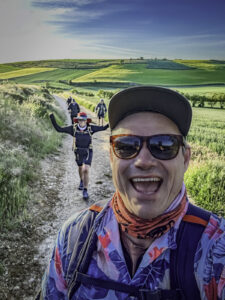 Leaving the quiet village of Hornillos del Camino, Patty and Eric continued across the Meseta, a landscape of vast, open plains and golden wheat fields. The quiet, golden fields stretched endlessly, offering a serene but challenging landscape with few villages along the way.
Leaving the quiet village of Hornillos del Camino, Patty and Eric continued across the Meseta, a landscape of vast, open plains and golden wheat fields. The quiet, golden fields stretched endlessly, offering a serene but challenging landscape with few villages along the way.
Midway, we passed the ancient ruins of San Anton, a former 14th Century monastery and pilgrim hospital. The stone archways, now partially open to the sky, stand as a reminder of the Camino’s centuries-old history of care and hospitality. Pilgrims in medieval times would walk beneath its impressive archway, where monks provided food and care, particularly for those suffering from ergotism, known as “St. Anthony’s Fire.”
Reaching Castrojeriz, we were greeted by its rich medieval history. Overlooking the town were the ruins of a 9th-century castle, offering a striking silhouette against the sky. Originally a Roman fortification, it later became a Visigoth stronghold and was expanded during the Reconquista as part of Spain’s defense against Moorish invasions. The castle has witnessed centuries of history, from battles to pilgrim protection, and offers panoramic views of the surrounding countryside.
Castrojeriz itself, a linear town stretching along the Camino, is rich in historical architecture, including the Gothic Church of Santo Domingo and the Collegiate Church of Santa María. Exploring its streets at the end of the day felt like stepping back in time, a fitting conclusion to another memorable day on the Camino. Click on thumbnail to view images
Day 17 Castrojeriz to Fromista
Leaving Castrojeriz, we faced an immediate challenge—the steep ascent of Alto de Mostelares, one of the highest points on the Meseta. The early morning climb rewarded us with sweeping views of the vast plains stretching in all directions. The descent was just as steep, leading us into the open countryside, where golden wheat fields and quiet dirt paths defined the landscape.
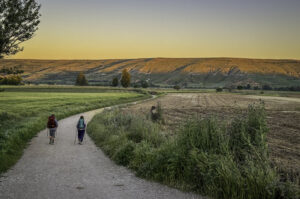 We soon crossed the Puente de Itero, a medieval bridge spanning the Pisuerga River, marking our entrance into the province of Palencia. A short distance away stood the ruins of San Nicolás de Puente Fitero, a 12th-century pilgrim hospital, now restored as a simple albergue run by volunteers who maintain the tradition of washing pilgrims’ feet in a centuries-old ritual.
We soon crossed the Puente de Itero, a medieval bridge spanning the Pisuerga River, marking our entrance into the province of Palencia. A short distance away stood the ruins of San Nicolás de Puente Fitero, a 12th-century pilgrim hospital, now restored as a simple albergue run by volunteers who maintain the tradition of washing pilgrims’ feet in a centuries-old ritual.
The Camino passed through small villages like Itero de la Vega and Boadilla del Camino, where we saw well-preserved examples of mudéjar and Romanesque architecture. Just before reaching Frómista, we walked alongside the Canal de Castilla, an 18th-century waterway built to improve grain transportation across Spain.
Frómista, our destination for the day, is known for the Iglesia de San Martín de Tours, one of the finest examples of pure Romanesque architecture in Spain. Built in the 11th century, its precise stone carvings and symmetrical towers reflect the artistic and spiritual heritage of the Camino. Frómista’s history and peaceful charm made it a fitting end to a day filled with both physical challenges and cultural discoveries. Click on thumbnail to view images
Day 18 Fromista to Carrion De Los Condes
Leaving Frómista, known for its perfectly preserved 11th-century Church of San Martín, we followed the Camino along the historic Tierra de Campos. This region, often called “Spain’s granary,” featured vast wheat fields stretching to the horizon, with a flat and open landscape that made for an easy but repetitive walk.
The route followed the old Roman road, Calzada de los Peregrinos, a reminder of the Camino’s deep historical roots. We passed through small villages like Población de Campos and Villalcázar de Sirga, the latter home to the imposing 13th-century Church of Santa María la Blanca, once a key stop for the Knights Templar.
Arriving in Carrión de los Condes, a town with a strong pilgrimage tradition dating back to the Middle Ages, we were greeted by its blend of Romanesque and Gothic architecture. The Monastery of San Zoilo, once a major Benedictine monastery, and the pilgrim-friendly Church of Santa María del Camino stood as testaments to the town’s long-standing role in supporting travelers on their way to Santiago. Click on thumbnail to view images
Day 19 Carrion De Los Condes to Calzadilla De La Cueza
Departing Carrión de los Condes, we entered one of the most isolated stretches of the Camino—17 kilometers of open fields without villages or services. This section, following the remnants of the old Roman road, was a test of endurance, with little shade and an unbroken horizon of wheat fields and dry plains.
The solitude allowed for reflection, with only the crunch of gravel underfoot and the occasional sight of other pilgrims in the distance. This route has remained largely unchanged since medieval times, when pilgrims braved harsh conditions to reach Santiago.
Reaching Calzadilla de la Cueza, a small village with deep historical roots as a medieval stop for travelers, we found respite in its peaceful atmosphere. Despite its size, the village has long served as an essential resting point for pilgrims crossing the vast Meseta. Click on thumbnail to view images
Day 20 Calzadilla De La Cueza to Sahagun
Leaving the quiet village of Calzadilla de la Cueza, we continued along the Camino’s historic Roman road, crossing the flat and arid landscape of the Meseta. The morning was peaceful, with few distractions beyond the rhythmic sound of our steps on the gravel path.
We passed through small villages like Ledigos and Terradillos de los Templarios, the latter named for its connection to the Knights Templar, who once protected pilgrims along this route. Ledigos is supposedly the halfway town from St Jean Pied de Port to Santiago de Compostela on the Camino Frances. This region, once a vital medieval trade and pilgrimage corridor, retains its deep historical significance.
Arriving in Sahagún, we entered a town rich in Moorish and medieval heritage. Known as an important religious and cultural center during the Middle Ages, Sahagún is home to notable Mudéjar-style churches like San Lorenzo and San Tirso, showcasing the unique fusion of Islamic and Christian architectural influences in Spain. The town, once a major monastic center, offered a fitting place to rest and reflect on another day’s journey along the Camino. Click on thumbnail to view images
